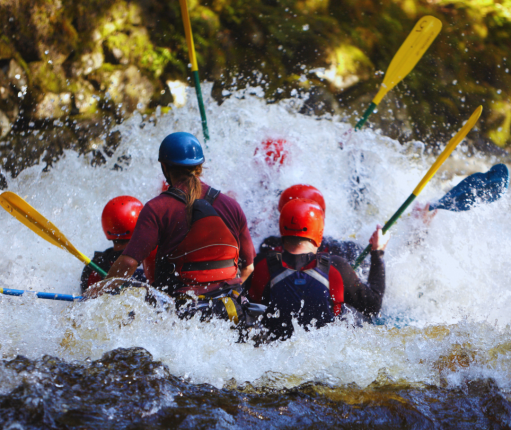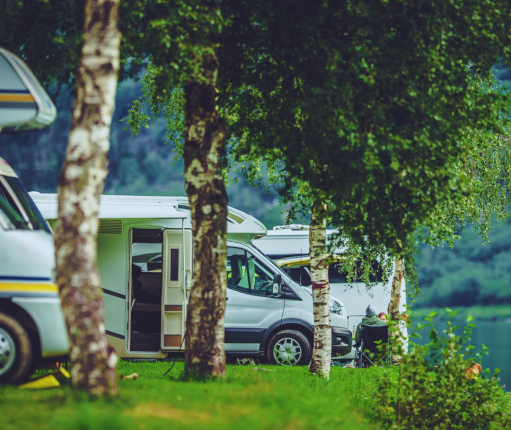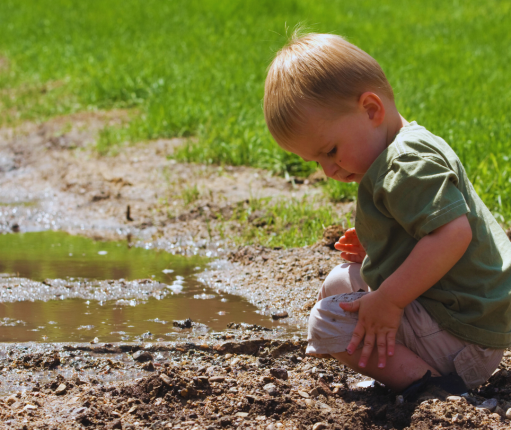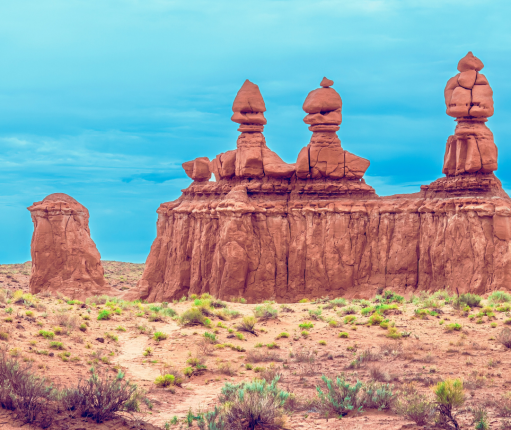With more and more people getting outside this year because of the pandemic, it leaves many people asking the question of “What do I pack for a day hike?”. It is important to be prepared and have the right gear. If you are not, you can put yourself at risk of getting hurt or injured.
I have a few friends that work for the local forest service and the National Parks. They have all voiced the same concerns that more people have gotten lost or hurt in the woods last year than in previous years. The problem is people not being prepared for day hiking or not being experienced enough to take the right gear.
I have put together this list of the ten essentials you need for day hiking as well as a few tips for your next hiking trip. I like to keep my hiking backpack separate from my other gear for camping and backpacking. This keeps it from getting lost and whenever I’m ready to go on a hike, I am ready to go without having forgotten something. It’s important to always be prepared for any circumstance while hiking including getting lost. These essentials include what you need for a day hike and what you may need in case of an emergency.
Backpack or Daypack
Before we talk about the ten hiking essentials, let’s talk about packs for day hiking. A good backpack is a must-have for day hiking. Besides water, I think it is the most important thing you need and the most important thing to really spend time and effort picking one out. A good day pack doesn’t have to be expensive or a name brand gear item, but it should be durable and last several years.
Every person is built differently and has different preferences, but here are some of the things you should look for when picking out a backpack for day hiking:
- Fit – A day pack should fit well and be snug, but not tight. It should be adjustable so that you can adjust it accordingly and as needed to redistribute weight and also for your body type. Torso length and hip size should be considered when choosing a day pack. You should also always try it before you buy it and walk out of the store.
- Features – A good day pack should have a water bladder reservoir and hydration hose port so that you can drink water as needed. Accessibility of your backpack and what’s inside should be considered. I like to have pockets on the sides for extra water bottles and a pocket close to the front for snacks and radio or phone.
- Capacity – Depending on how far you are hiking, a day pack can be anywhere from 18-35 liters. It should always be big enough to be able to hold all of the other hiking essentials including extra food, water, and clothing. A pack that is too big and heavy just weighs you down and a pack that is too small leaves you unprepared.


Now that we’ve discussed day packs, let’s talk about the ten essentials you need for hiking. These items are considered necessary for hiking and should never be left behind. You never know what will happen, so you should be very prepared. The ten hiking essentials are:
- Navigation
- Light
- Bug and Sun Protection
- First aid
- Knife of Multi-tool
- Fire
- Shelter
- Food
- Water
- Appropriate Clothing
The 10 Hiking Essentials
1. Navigation
Know where you are going, how you are getting there, and how to find your way. Too often people get lost because they get disoriented, or are in unfamiliar territory. People also go off-trail instead of staying on the designated paths. You should take any of the following with you:
- paper map and compass
- GPS device or GPS/map app
- personal locator beacon or satellite messenger (like Somewear)
The one time I relied on my phone, was the time I got lost. Luckily for me, I was able to find the direction I was going by following the sun and had a paper map and compass. That same week, a guy was lost in the same area for 8 days. Know how to use your gear to navigate. It’s useless if you don’t know how to use it. Paper maps and compasses are probably the most reliable form of navigation.
2. Light
You should always have some type of light with you in case you end up having to hike in the dark or end up stranded. A light can be used to signal rescuers when you are lost. There are lighting solutions that are rechargeable with solar or electricity or lights that use batteries. If your light uses batteries, be sure to take extras. Always make sure before you go hiking, that your light is charged and you have fresh batteries.
Headlamps are a preference for most because they are lightweight and hands-free. I like to have an additional small flashlight as a backup. You should carry extra batteries if needed.
If you are looking for the right headlamp, don’t be afraid in investing a little money. Obviously, you can get them for less than $10.00, but you may not be getting the quality that you need. When picking a headlamp, consider fit, brightness, and how long the battery lasts.
3. Sun and Bug Protection
You should protect your skin as much as you can while hiking and backpacking. Use a sunscreen, wear a hat and long-sleeved clothing if able, and wear insect repellant. If you do not protect your skin, you are at risk of heat-stroke, sunburns, and skin cancer and sunscreen should also be used in the winter. Insects and bugs like ticks and mosquitoes can spread diseases. Especially in the woods during tick season, you want to avoid getting bitten by ticks because they carry Lyme Disease and Rocky Mountain Spotted Fever.
For a hat, I like to wear something with a wider brim. I also like neck gaiters because they are multipurpose like a bandanna and I have the option to use them to keep my hair back and keep the sun off of my face or neck. When we go backpacking or hiking, I like mosquitos nets for the face. They look ugly, but they work.
4. First-aid
Any time you are outdoors for any activity, you should have at the minimum, a small first aid kit. It is not a matter of if you will use it, but when you will use it. I always like to be prepared in case someone gets hurt. Besides a basic first-aid kit, I also take with me Benadryl, moleskin, and an ace bandage or athletic tape. Tip: First aid kits should always be red. It’s easy to identify and red is the universal sign for first aid. If you use something for your first aid kit, always replace it when you get home.
5. Knife or Multi-Tool
A knife or multi-tool should always be carried with you when you are hiking. You never know when you are going to use it. It can be useful for cutting moleskin, sharpening sticks, cutting up food, etc. My personal preference for hiking is a small pocket knife. My husband usually carries a multi-tool which he also uses for backpacking and camping. If you do decide to carry a multi-tool, make sure it has practical extensions for hiking. Chances are that you won’t need a wine bottle opener or a screwdriver while hiking and it just adds weight that you don’t need.
6. Fire
Never leave on a hike without it! Fire is considered an essential tool for hiking because even if you are only going on a day hike, it is essential to survive if you get lost. It provides warmth, hot food, sterilizes water so it is drinkable, and can be used to signal for help.
Lighters are always great to carry but what happens if it gets wet? Or you are out of butane or if it is an electric one, you don’t have a charge? There are many ways to start a fire including:
- Electric or butane lighter
- Matches
- Flint and steel or a ferro or magnesium rod
7. Shelter
It is always best to be prepared in case you have to overnight it in the back country. I always carry an emergency tent or space blanket, just in case. It’s an essential piece of gear that I also keep in my emergency kit in my car. You never know if you will need one. An emergency tent or space blanket can also be used as a rain poncho or to signal for help in case of an emergency because they are reflective. I can’t count the number of times I have been caught in the rain and I was glad to have. If you want to be extra prepared, the “Bushcraft 101: Field Guide” is an excellent source to learn about making impromptu and emergency shelters.




8. Food
Food is an important essential for hiking. You want to be able to consume the right foods so you have enough energy, but not have it weigh you down. Here are some things you should avoid when packing food for a day hike:
- Taking too much
- Not taking enough
- Taking foods that are too heavy or bulky
- Not enough variety
- Too many sweets and not enough protein
- Packing food that doesn’t have enough nutrients
- Planning elaborate meals that aren’t practical
You should always take enough food with you to keep you full and energized. It’s always good to take dry foods with you that can’t go bad and a good mix of sweet/ salty/ savory. Some great snacks include trail mix, granola bars, beef jerky and hard cheeses. In case of emergencies, I will also pack one freeze dried meal.
9. Water
Water is the most essential thing you need for hiking. Having enough and sufficient water is the most important thing when day hiking. Here is an excellent article on how to determine how much water you will need while hiking. There are times that I haven’t taken enough food, but I always take enough water.
I suggest that when you are hiking, you should take a water bladder with you but also have a backup system in case of emergencies. Because water is heavy, consider refilling your bladder or water bottle from nearby water sources. This requires sterilizing the water because unclean water can lead to serious illness. There are multiple ways to sterilize water: filters, UV light, water purification tablets, or boiling. Tip: Check with your local forest service to see if there are any warnings regarding the water quality in the area.


10. Clothing
Always wear clothing that is appropriate for the weather, comfortable and moisture-wicking socks, and a good pair of shoes. Layers are best because if it is too hot or too cold, you can adjust as needed. I always take a warm jacket in case I am stuck outside at night or the weather changes quickly. It’s not uncommon to have a freak snowstorm in Montana in August. A moisture-wicking base layer is a must, to keep you dry with all of the sweat or muggy weather. I know this sounds weird, but I always take a fresh pair of socks and underwear for emergencies. Here are a few tips for choosing the right clothing for hiking:
- Wear shoes that are appropriate for hiking with good support and fit well.
- Wear socks that are moisture-wicking and breathable to reduce blisters and “hot foot”.
- Layering is important for hiking. Consider the following layering system when hiking:
- Base Layer: tops and bottoms made of moisture-wicking material or other fabrics that absorb moisture away from your body and insulate even when wet.
- Mid-Layer: insulating layer like fleece, flannel or thermal.
- Outer Layer: windproof and waterproof pants and jacket, that will shed water instead of absorbing it and blocking wind, “breathable” fabrics are best.
- Wear clothing that is appropriate for the weather. Be sure to check the weather forecast ahead of time and be prepared for a freak storm.
Other Useful Hiking Gear
Besides the ten hiking essentials listed above, there are a few other things that even though they are not considered helpful, can make your hike more enjoyable or even safer. For some other suggestions, there is a good list included in my useful gift guide for hiker’s, that has a few more recommended products. Besides the 10 hiking essentials, consider taking the following on your next hiking trip:
- Emergency Whistle
- Bear Spray
- Bear Bell
- Rain Poncho
- Paracord
- Toilet Paper
- Hiking Poles
- Potty Shovel
- Fanny Pack
- Pocket Stove




Helpful Hiking Tips
Last bit not least, I thought I would include some essential tips for hiking. Besides being prepared with the right gear, you should also take the time to plan your hike properly. Here are some quick tips for preparing for your hike:
- Check the weather
- Know your route
- Plan for emergencies
- Tell someone where you are going
- Be prepares for any situation
- Check route info before you go
Do you have a favorite gear item that you can’t live without when going hiking? Do you have any suggestions for your fellow hikers? I always love suggestions, so be sure to drop a comment below. And as always, be outside with no limits.














































Leon Heyneke
Thank you for this. We are in South Africa and go camping/hiking as often as possible. Enjoyed it a lot. Appreciate espesially the video on the compass. Got to admit; THAT part of my knowledge where a bit rusted and slightly outdated. Thanks.😁
admin
Everyone should be able to use a compass. I’m teaching my son right now.